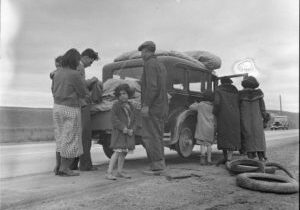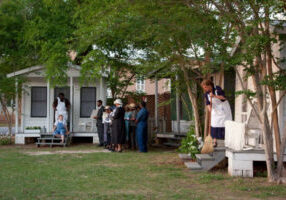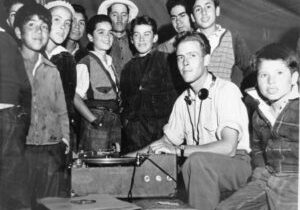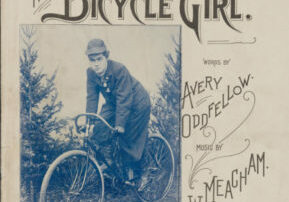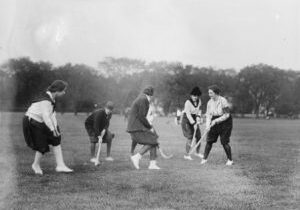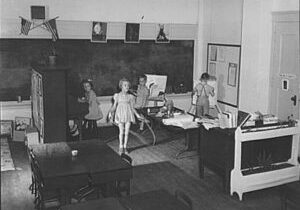Lesson Plans
Immigration and Migration: Today and During the Great Depression
Students analyze historical primary sources, including oral histories, photographs and films and collection, to develop an understanding of the lives of immigrants during the Great Depression. Then students gather migration stories of a family member, friend, neighbor or community member, comparing the stories they collected to those of the past and considering the value that stories of everyday people play in creating a patchwork collection of the American memory.
Exploring Community Through Local History: Oral Stories, Landmarks and Traditions
After being introduced to the American Life Histories: Manuscripts from the Federal Writers' Project, 1936-1940 collection, students explore the local history and contemporary culture of their community through written and spoken stories; through landmarks such as buildings, parks, restaurants, or businesses; and celebration of cultural traditions.
To Kill a Mockingbird: A Historical Perspective
Through study of literature and and analysis of relevant primary sources, students of all backgrounds better grasp how historical events and human forces have shaped relationships between black and white, and rich and poor cultures of the United States. After, students may consider whether there are people in their community with an historical perspective on social attitudes and behaviors regarding prejudice and invite them to take part in an oral history interview conducted in front of the class.
Oral History and Social History
Students study social history topics by analyzing life histories from the Federal Writers' Project (1936-1940) that recount the lives of ordinary Americans. Based on these excerpts and further research in the collections, students develop their own research questions, then plan and conduct oral history interviews with members of their communities.
Music and U.S. Reform History: Stand Up and Sing
Throughout American history, popular music has reflected the mood and opinions of the times. By analyzing sheet music and song sheets, students explore issues related to industrialization and reform to answer the essential question, "How does society respond to change?" After, students work in groups to create song sheets about reform topics from the Progressive era and also from the present.
Recreation Yesterday & Today
Students conduct research and analyze primary sources to investigate entertainment and recreation in the 1920s and 1930s, comparing urban and rural experiences for this time period with their own experiences. After, students may conduct oral histories with local people in order to test their conclusion about recreation and entertainment in their community or use population density maps or settlement maps to hypothesize about a connection between distance and entertainment.
Natural Disasters: Nature’s Fury
Students analyze a variety of primary sources to examine Americans' life changing experiences with nature during the late 19th and early 20th centuries, then research the Library of Congress online collections to broaden their understanding of how communities have dealt with disaster. Next, students connect their investigations to a literary work of historical fiction based on a natural disaster and conduct additional historical inquiry research. After presenting their findings students may examine a recent natural disaster, locating and analyzing primary source documents related to it, and noting similarities and differences in causes, effects and community responses to those of earlier times.
Local History: Mapping My Spot
Through primary source analysis of different types of historical maps, students begin to see their homes as places of value in relation to the broader community portrayed on the panoramic map of their town. After, students document their town’s history for coming generations, placing themselves on a map of their creation and writing letters to future children in their community.
National Anti-Suffrage Association
Students analyze primary sources to investigate creator purpose and arguments against woman suffrage. After, students explore a current suffrage issue, such as felon voting rights or lowering the voting age to 16, and create an image to convince viewers to support or oppose the issue they investigated.
At School
Students compare and contrast school historical and contemporary classrooms and extended day care school programs and the value they provide to communities.

